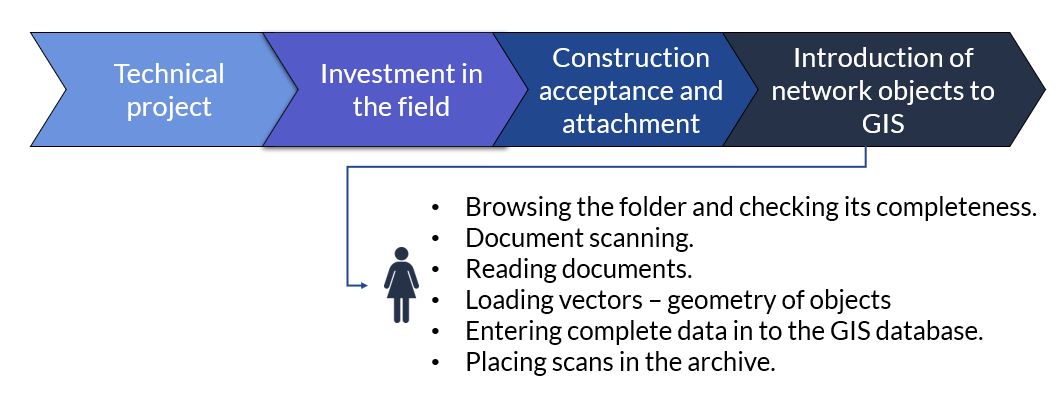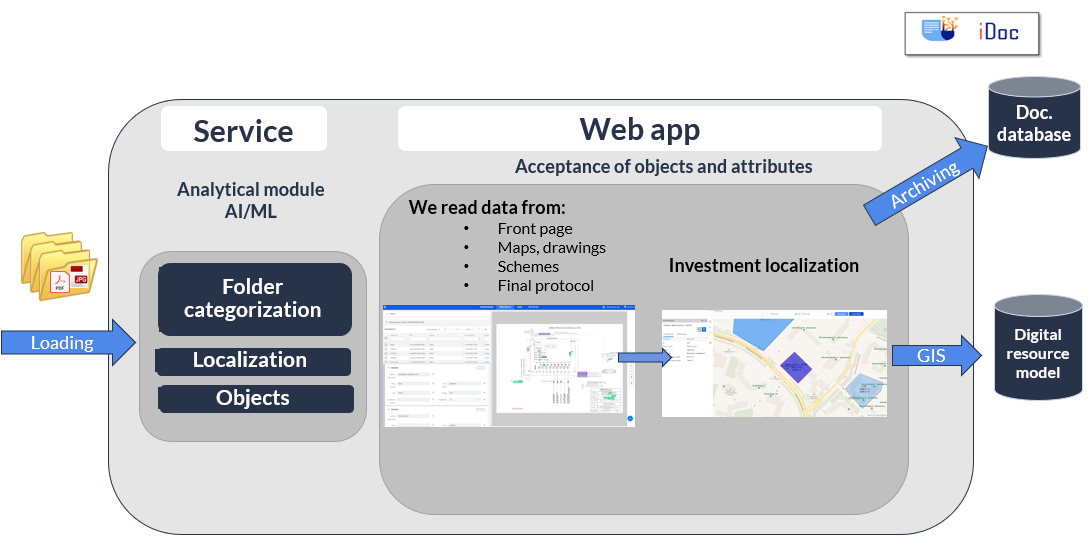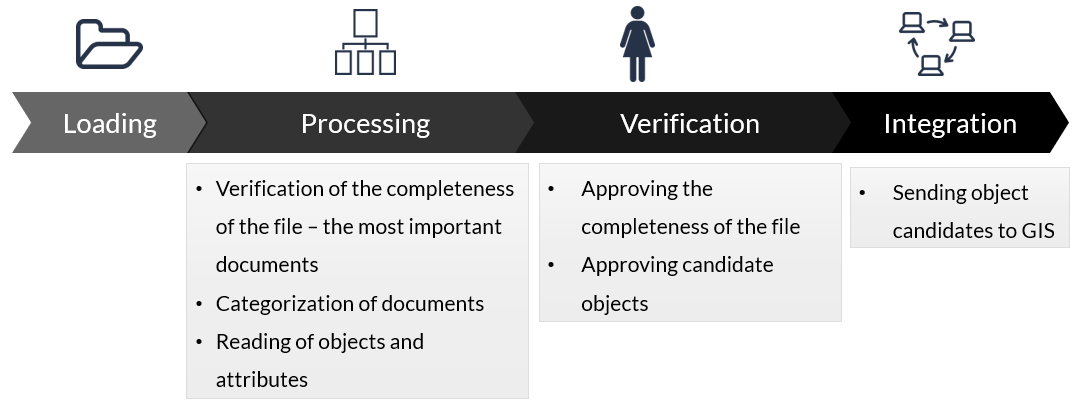
GIS systems and digital models are indispensable for companies managing extensive networks, whether in telecommunications, district heating, or energy. However, the systems alone aren’t enough; having accurate, up-to-date data is essential to ensure their seamless operation.
What will you learn from this article?
- An introduction to digital twins and their applications.
- Why timely updates to the digital network model are crucial, and the challenges associated with manual digitization.
- How AI-powered tools, like the iDoc solution, can streamline network model updates.
What is a Digital Network Model, and Why is it Important?
Digital network models, or “digital twins”, are virtual replicas of physical networks, including electric, telecommunications, district heating, water supply, and more.
These models enable companies to monitor network processes, perform analyses, and support both daily operations and strategic planning (such as modernization or expansion). A well-maintained digital twin optimizes network management and supports broader business management efforts.
Why Keeping Digital Network Data Updated is Essential
To serve its purpose effectively, a digital network model must mirror real-world conditions closely, which requires accurate, timely data. Without current data, the model risks becoming disconnected from the actual state of the network.
Relying on outdated information can lead to flawed task planning and inaccurate decision-making, as the digital twin no longer represents the actual network. Efficient, real-time updates allow for prompt responses, thorough analyses, and streamlined workflows—ultimately leading to time and cost savings.
The Investment Process and Digital Network Model Updates
Network infrastructure projects tend to follow a similar path. After completing an investment project in the field, as-built documentation is created and filed—often in digital or paper form. For companies with GIS systems, this documentation is critical for updating the digital network model with new information.
Manual data entry, however, can be time-consuming and includes several key steps:
- Uploading network design data into the GIS.
- Collecting and verifying construction documentation.
- Scanning documents.
- Manually entering spatial (geometry) information and other relevant data into the GIS.
- Archiving documentation scans.
Challenges of Manually Entering Network Data into a GIS Database
While the manual process of inputting as-built documentation into a GIS database is thorough, it’s also time-intensive and prone to data inaccuracies. The lag from project completion to data entry can span weeks or even months, delaying updates to the network model.
This delay has real implications. Until the information is digitized, the latest network changes aren’t available for critical activities like outage monitoring, distribution switching, billing, analysis, and reporting. Essentially, the network inventory system lags behind the real-world infrastructure, leading to a disconnect between operations in the field and digital records.
Imagine relying on an outdated road map: newly built roads and intersections exist but aren’t yet reflected in the GPS system. While the actual route could be faster, the system still navigates as if the recent improvements aren’t there. Similarly, a digital network model that lags behind reality limits efficiency and slows down decision-making.
Solving the Network Model Update Problem with AI
This is where artificial intelligence (AI) and Globema’s iDoc solution step in to bridge the gap.
Leveraging advanced AI algorithms, iDoc can extract key data directly from scanned technical documents. This includes identifying document types, extracting relevant information, and transferring it seamlessly into the GIS system. As a result, network models are updated quickly and accurately with the latest investments and upgrades.
Scanned documents are stored in a digital repository, and iDoc’s AI reads data from various formats, such as document pages, maps, schematics, and final reports. Over 30 attributes, including file numbers, contractors, facility details, and station identifiers, are automatically converted into digital data, with room for customization as needed.
How Does iDoc Process Documentation?
The iDoc process begins by loading scanned as-built documentation into the system.
Once uploaded, iDoc verifies the completeness of the document dossier, categorizes each document, extracts relevant objects and attributes, and generates database entry suggestions—known as “candidates.”
To ensure top-tier accuracy, these candidates are reviewed and verified by a human expert, minimizing the risk of data errors and maximizing reliability.
Key Benefits of Digitizing As-built Documentation with iDoc
With iDoc, automatically categorizing documents, extracting data, and transferring it to a database is around 15 times faster than manual data entry.
In addition to speed, iDoc excels in accuracy. The system flags incomplete data and areas needing verification, which helps eliminate common manual entry mistakes.
Here’s how these benefits enhance both the documentation team’s work and the usability of the digital network model:
Automating data entry frees up personnel for other tasks while still involving them for final data verification, ensuring the highest accuracy.
Rapid digitization means the network inventory system can be updated quickly, allowing operators to work with the latest model instantly.
With up-to-date network information, decision-makers at both operational and strategic levels are well-equipped to make informed choices, maximizing the model’s value.
iDoc’s automated process helps prevent human errors often caused by fatigue or distraction. The final verification step ensures 100% data accuracy, adding a reliable layer of human oversight.
By optimizing staff time and eliminating the need to hire for data entry roles, iDoc reduces the costs associated with manual documentation processing.
Most importantly, iDoc minimizes financial losses associated with outdated data models. With the latest investment information integrated quickly, you can avoid the costly consequences of working with obsolete data.
Did this article resonate with you? Are network data digitization and efficient model updates top of mind for your organization?
To learn more about iDoc, visit our solution page or reach out to us directly.
Read more
Enhancing Your Telco Infrastructure Management: Discover the Updates in Physical Route Manager & Data Center Manager Smallworld Add-ons
Estimate Telecom Investment Costs and Identify Prime Locations for Network Expansion with FTTH Investment Planner
FTTH Investment Tracker: Monitor Your Telecom Investment Progress with One Comprehensive System














